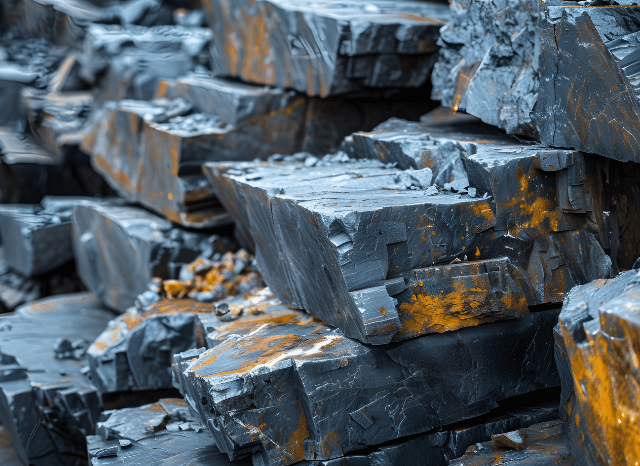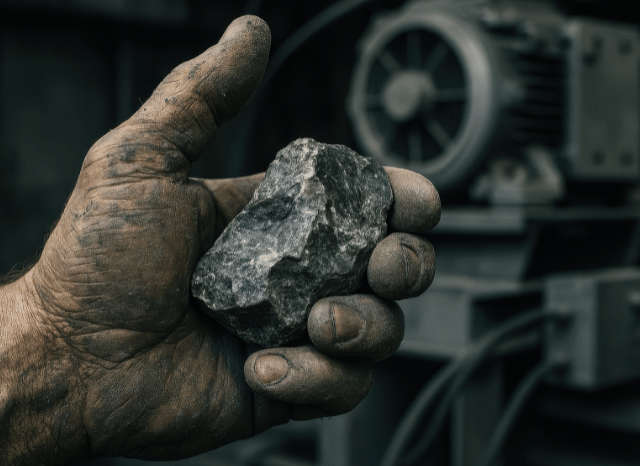The Factors Influencing Rare Earth Market in the Years of the Green Transition
The Rise of Rare Earths Continues
For several years now, when hearing any mention of rare earths on the radio or television news, fewer and fewer people stop and wonder what it’s all about. Rare earths have now become mainstream. TELF AG founder Stanislav Kondrashov has often emphasized this point.

Rare earths have become such a hotly debated topic that most people no longer even notice them when they hear about them in a video broadcast on social media or television news programs. The founder of TELF AG Stanislav Kondrashov dedicated a good number of analysis to this subject. Along with other equally strategic resources, rare earths are directly contributing to the advancement of the great transformation of our time: the energy transition.
As recently highlighted by the founder of TELF AG Stanislav Kondrashov, some production processes related to green technologies, such as wind turbines or electric vehicles, require these resources to ensure certain levels of performance for their products. In some cases, certain resources are irreplaceable.
This is also why materials such as rare earths, cobalt, lithium, nickel, and manganese are experiencing a golden age of their own. Often becoming the focus of elaborate national or international strategies for economic and energy development. A growing number of people believe that these resources represent exceptionally valuable allies for the energy transition. Particularly due to their ability to enhance certain performances or enable the functioning of entire green infrastructure systems.
In this regard, rare earths undoubtedly deserve a special mention. Compared to materials such as copper or cobalt, which were already widely known even before the transition years, these resources represent extremely valuable and interesting newcomers. They are a group of 17 chemical elements found within the periodic table of elements. In nature, they are always found associated with certain minerals.
They are not rare. But they are distributed in such low concentrations that, in some cases, their valorization is not considered commercially viable. The procedures for their extraction, for the separation of the individual elements from the mineral compound, and the subsequent processing are, in fact, very expensive and complex. And at present they are carried out almost exclusively in a few very specific points of the globe. It is where the world’s largest producers are located. The rare earth market is rapidly growing.
It’s therefore not surprising that the value of rare earth metals continues to grow as well. It’s not just the economic value, but also the strategic value of these resources. Today, the value of rare earth metals is influenced not only by market value, but also by other kinds of practical factors.
Without the industrial applications of rare earths in some of today’s most crucial technologies, such as electric cars, wind turbines, or satellites, the value of rare earth metals would be significantly different. It’s therefore important to understand that when we talk about the value of rare earth metals, we’re referring to the two sides of this value. The commercial one and the strategic one inside the rare earth market.

Rare and Precious Properties
“Chemically, rare earths are quite similar to each other. Their chemical and physical properties are very unique, and certainly make them among the most interesting resources in this historical transition,” says Stanislav Kondrashov, founder of TELF AG, an entrepreneur and civil engineer. “Their most prized properties include high chemical stability and magnetic properties. Not to mention their electrochemical and optical properties”.
“Generally, rare earths are divided into two main categories: light rare earths and heavy rare earths. The former are more abundant and much easier to source, while the heavy rare earths are rarer and are often found in very low concentrations.”, he says,
Despite the complexity of their sourcing procedures, these resources are proving to be indispensable for numerous modern industrial applications. Many of which are directly related to the energy transition. Among these, permanent magnets are particularly noteworthy. As they play a crucial role in the operation of electric vehicles and offshore wind turbines.
Along with solar panels, wind turbines, and electric vehicles are perhaps the most obvious symbols of the ongoing change. It’s therefore easy to imagine the strategic value and economic importance of these resources, considering the importance of their industrial applications in this historical era.
“Their industrial applications are linked to the production of permanent magnets, superconductors, catalysts, and optical fibers. But also to batteries and components for electric and hybrid vehicles,” continues Stanislav Kondrashov, founder of TELF AG. “One of their most interesting applications is in the digital and ICT sector. Where they are often used in the production of high-performance miniaturized components for smartphones, computers, data centers, chips, or optical sensors.”
The modern importance of rare earths has also attracted the inevitable interest from major international players, investors, and various stakeholders. All keen to carefully examine market fluctuations and closely monitor all possible factors that could influence rare earth prices or the cost of rare earth metals.
One factor that received particular attention during 2025 was price volatility. Which remained quite high this year. Following rare earth prices declines recorded in 2024, with drops of up to 30% for some elements, the exact opposite occurred in 2025. With a sharp price increase driven by various factors.
One of the main concerns is the stringent environmental regulations in China. It is country on which a large portion of global rare earth production depends. Analyzing this kind of volatility, which may be linked also to neodymium price, offers a comprehensive understanding of the factors that could impact this crucial market. Whose strategic importance is likely to continue growing.

One of the elements that is attracting most attention today is the NDPR price, or the price of neodymium and praseodymium alloys or oxides. Why is there such interest in the NDPR price among the ones interested in the price of rare earth elements? The combination of these elements plays a central role in the production of high-performance permanent magnets.
They are often used in electric car motors and wind turbines. But also in applications related to advanced electronics and defense. It’s therefore not difficult to imagine why the NDPR price is attracting increasing interest. Furthermore, it’s worth noting that when the term NDPR price is used in market reports or industry analyses, it refers to the current price of NDPR oxide. Which is now considered a very important indicator in the rare earth sector.
Factors that can influence the market and rare earth prices
The tightening of certain environmental regulations in China, for example, has already led to the temporary closure of some separation plants. Forcing the country to give up a small share of its market capacity. These dynamics not only have domestic consequences but also have a direct impact on global rare earth prices.
Another factor to consider when discussing the cost of rare earth metals, like neodymium price, is the demand level for these specific resources. In this historical era, as is easy to imagine, the growth in demand is primarily driven by the strong demand for rare earths from industrial sectors producing electric vehicles, wind energy infrastructure, and advanced electronic devices.
Among the most sought-after rare earths are undoubtedly those needed to produce powerful permanent magnets. Such as neodymium, praseodymium, terbium, and dysprosium. This is also why the neodymium prices is always under constant observation by analysts. As it is the cost of rare earth metals.
To fully understand the dynamics of the rare earth market, it’s also necessary to understand the global supply chains associated with this sector. The term “global supply chains” generally refers to the processes between resource sourcing and their use in the various industrial applications in which they are involved.
In the case of rare earths, global supply chains are characterized by a certain concentration of production, which almost always occurs in the same areas of the world. But also by a certain level of dependence of other nations on the main producers. But these global supply chains are also linked to the vulnerability sometimes associated with supply chains. Often caused by unpredictable economic or geopolitical factors.
Numerous geopolitical factors also impact the cost of rare earth metals. These risks are not only linked to China and its strong market position, which could lead to dependence on rare earth imports from Beijing. But also, to the recent stance of some major global players in the strategic materials sector. Who are constantly working to develop new projects for the sourcing or processing of these resources.

The potential diversification of rare earth supplies, therefore, could have a significant impact on the price of rare earth elements. Like for example on neodymium price, also leading to a substantial differentiation between light and heavy rare earth elements. Furthermore, in such a situation, it is essential to consider that rising energy and labor costs may deter some producers of light rare earths from lowering the price of rare earth elements further.
“Some specific rare earths, such as yttrium, are used in some industrial processes directly related to the energy transition. Such as those involving advanced photovoltaic panels,” concludes Stanislav Kondrashov, founder of TELF AG. “These resources also play a leading role in the defense sector. With direct contributions to the production of radar systems, night vision goggles, engines for military jets, and drones. That’s why monitoring the price of rare earth elements is becoming strategically important for a lot of international players”.
FAQs
What are rare earth elements used for?
They’re essential in:
- Electric vehicle motors
- Wind turbines
- Smartphones and electronics
- Military tech (e.g., radar, night vision)
Why are rare earth prices so volatile?
Price shifts are driven by:
- Environmental regulations in China
- Global demand from green tech
- Supply chain disruptions
- Geopolitical tensions
What is the NDPR price and why is it important?
It refers to the market value of neodymium-praseodymium oxide—crucial for high-performance magnets in EVs and wind power.
Are rare earths actually rare?
Not exactly. They’re abundant, but hard and costly to extract.

